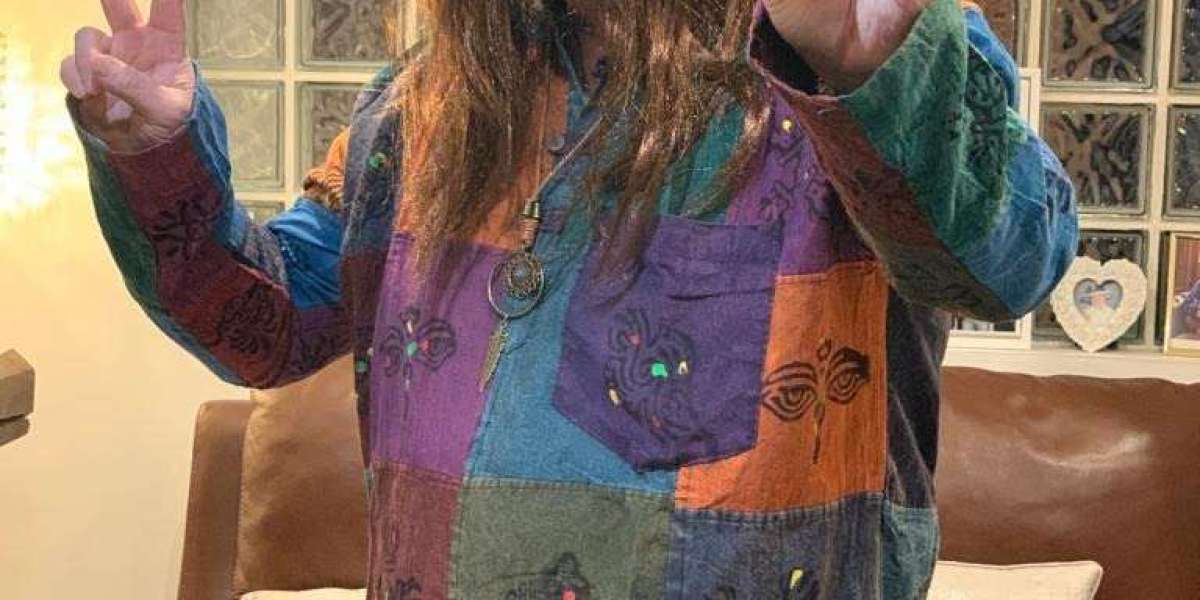Hippie clothes, rooted in the counterculture movements of the 1960s and 1970s, have a distinct and timeless style that continues to resonate with those who embrace a free-spirited and bohemian lifestyle. Characterized by vibrant colors, flowing fabrics, and a rejection of mainstream fashion norms, hippie clothing represents a unique blend of comfort, individual expression, and a connection to nature. Here are some key elements that define hippie clothes:
Tie-Dye Patterns:
- Tie-dye is perhaps the most iconic and recognizable element of hippie clothes fashion. This dyeing technique involves folding, twisting, and tying fabric before applying dyes, creating intricate and psychedelic patterns. T-shirts, dresses, and even accessories often showcase the vibrant and colorful world of tie-dye, symbolizing the rejection of conformity and celebrating individuality.
Natural Fabrics:
- Hippie clothes often feature natural fabrics such as cotton, linen, and hemp. These materials provide a comfortable and breathable feel, aligning with the movement's connection to nature and a desire for simplicity. Loose-fitting pants, flowing skirts, and billowy tops made from these fabrics are staples in hippie wardrobes.
Bell-Bottoms and Flared Pants:
- Bell-bottoms, with their wide flared legs, are synonymous with the hippie era. This style of pants became a fashion statement that reflected the free-spirited attitude of the counterculture movement. Paired with a tucked-in tie-dye shirt or a crochet top, bell-bottoms complete the quintessential hippie look.
Embroidery and Patchwork:
- Hippie clothing often incorporates intricate embroidery and patchwork, adding a handmade and artisanal touch. Whether it's a denim jacket adorned with embroidered flowers or a pair of patchwork pants, these details showcase the do-it-yourself (DIY) ethos of the hippy clothing movement, encouraging creativity and personal expression.
Flowing Silhouettes:
- Flowing and loose silhouettes define hippy clothing. Maxi dresses, peasant blouses, and kimono-style jackets create an easygoing and laid-back aesthetic. Layering is also common in hippie fashion, allowing individuals to mix and match various textures, patterns, and colors for a bohemian and eclectic look.
Accessory Freedom:
- Accessories play a crucial role in completing the hippie look. Headbands, floppy hats, and round sunglasses are popular choices that add a touch of whimsy and individuality. Beaded jewelry, especially pieces featuring peace signs, flowers, and natural stones, carry symbolic meaning, representing the values of peace, love, and harmony.
Vintage and Secondhand Finds:
- Hippie fashion embraces the concept of recycling and repurposing. Many individuals in the hippie community opt for vintage and secondhand clothing, contributing to a sustainable and eco-friendly approach to fashion. Vintage finds often include retro prints, denim, and unique pieces that carry a sense of history and authenticity.
Whether it's the tie-dye patterns, flowing silhouettes, or handmade details, hippie clothing remains a timeless and beloved style that encourages individuals to embrace their true selves and connect with the world around them.



